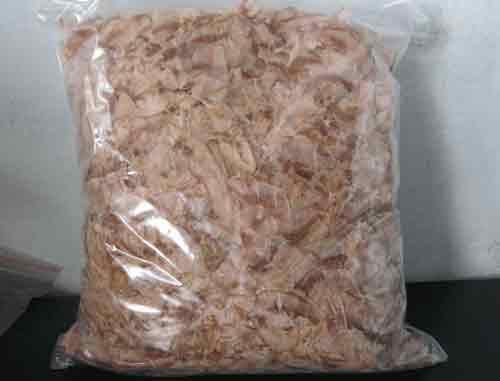Greetings! You will know about the Bonito Flakes, it’s history, popularity, how to made it, it’s benefits etc in this article. Different nations of different areas are used to take different types of taste. Who doesn’t want to taste a yummy item? Fish and fish made recipe are popular all over the world. We are going to present such a fish made item that is known to all over the world. The item is especially popular to Japanese people. Stay connected with us though this site!
What is Bonito Flakes ?

Do you know what is bonito flakes ? Hana Katsuobushi, in English is Dried Bonito Flakes or tuna flakes. Bonito flakes are tuna shavings or dried tuna fish, also known as bonito fish (Katsuwonus pelamis). Shaved bonito flakes such as wood shavings are used to make broth which is basic ingredient of Japanese cuisine. It is also sprinkled over some Japanese food as a flavoring. Bonito flakes is tasty and unique. It can dance or move when it is sprinkled on hot takoyaki or onto any hot food.
Bonito flakes already shaved thin, light brown, slightly translucent and generally sold in plastic packaging. Bonito flakes as a food seasoning usually sprinkled over cold tofu, okonomiyaki and takoyaki. In Japan, Bonito flakes that have been shaved often called Kezuribushi.
Making bonito flakes commonly practiced in some countries such Japan and Indonesia. Why bonito fish flakes also known as wood fish? Because tuna fish that has been processed into hard like wood, so before use it you should shave it.
Bonito flakes, also known as katsuobushi in Japan, are a staple in many Japanese dishes and have gained popularity in other parts of the world as well. These thin, dry flakes are made from fermented, smoked, and dried bonito fish and are used to add a deep umami flavor to soups, stews, sauces, and other dishes. In this article, we’ll explore the history of bonito flakes, their nutritional value, and how they’re used in cooking.
History of Bonito Flakes

Bonito flakes have been a part of Japanese cuisine for centuries, and their use can be traced back to the Edo period (1603-1868). During this time, fishermen would catch bonito fish and preserve them by smoking and drying them. These preserved fish would then be grated into fine flakes, which were used as a seasoning for various dishes.
In the early 20th century, the production of bonito flakes became more efficient thanks to the invention of a machine that could shave the dried fish into thin flakes. This made bonito flakes more widely available and affordable, and they quickly became a popular ingredient in Japanese cuisine.
Unveiling the Nutritional Value of Bonito Flakes
Bonito flakes, also known as katsuobushi, are a staple in Japanese cuisine and are gaining popularity worldwide due to their unique umami flavor and versatility. These paper-thin shavings of dried, fermented skipjack tuna hold a special place in the culinary world. Beyond their exquisite taste, bonito flakes also offer a range of nutritional benefits. In this article, we’ll dive into the nutritional value of bonito flakes, shedding light on why they are a valuable addition to your diet.
Protein Powerhouse
One of the most significant nutritional benefits of bonito flakes is their high protein content. Protein is essential for building and repairing tissues, and it plays a crucial role in maintaining muscle mass and overall bodily functions. A 100-gram serving of bonito flakes can contain approximately 61 grams of protein, making it an excellent source for individuals seeking to meet their daily protein requirements.
Packed with Vitamins and Minerals
Bonito flakes are not just about protein; they’re also rich in essential vitamins and minerals. Here are some key nutrients you can find in these flavorful flakes:
1. Vitamin B12:
Bonito flakes are a remarkable source of vitamin B12, which is vital for maintaining healthy nerve cells, producing DNA, and preventing anemia. A 100-gram serving may provide more than 1300% of the recommended daily intake of vitamin B12.
2. Selenium:
Selenium is an essential trace mineral with antioxidant properties. It plays a role in protecting your cells from damage caused by free radicals and supports a healthy immune system. A 100-gram serving of bonito flakes can supply around 110% of your daily selenium needs.
3. Niacin (Vitamin B3):
Niacin is essential for converting food into energy and maintaining healthy skin, nerves, and digestion. Bonito flakes contain a notable amount of niacin, contributing to your daily requirement.
4. Phosphorus:
Phosphorus is essential for the formation and maintenance of strong bones and teeth, and it also plays a role in kidney function. A serving of bonito flakes provides a significant portion of your daily phosphorus needs.
5. Magnesium:
Magnesium is crucial for muscle and nerve function, blood glucose control, and bone health. It’s another valuable mineral found in bonito flakes.
Low in Calories and Fat
For those watching their calorie and fat intake, bonito flakes offer a great balance between nutrition and low-calorie content. A 100-gram serving typically contains fewer than 300 calories and minimal fat, making them a guilt-free addition to various dishes.
Umami Flavor Without Added Sodium
Umami, often referred to as the fifth taste, is what makes bonito flakes so unique. They provide a savory, smoky, and slightly fishy flavor that enhances the taste of dishes without the need for excessive salt or sodium. This umami punch is not only delicious but can also help reduce your overall sodium intake, promoting heart health.
Versatility in Culinary Creations
Bonito flakes are incredibly versatile in the kitchen. They can be used as a topping for dishes like okonomiyaki, takoyaki, and udon soup, or as a seasoning in sauces, dressings, and marinades. Their rich umami flavor can elevate a variety of cuisines beyond Japanese dishes, making them a valuable ingredient for home cooks and professional chefs alike.
A Word of Caution
While bonito flakes offer numerous nutritional benefits, it’s essential to enjoy them in moderation. Some products may contain additives or excessive salt, which can diminish their health advantages. Be sure to read labels and choose high-quality bonito flakes for the best nutritional value.
In conclusion, bonito flakes are not just a delightful culinary indulgence; they are also a nutritional powerhouse. With their high protein content, abundance of vitamins and minerals, and low-calorie profile, they can enhance your diet while adding a burst of umami to your favorite dishes. So, whether you’re exploring Japanese cuisine or looking to elevate your cooking, consider incorporating bonito flakes into your culinary repertoire for both flavor and nutrition.
Why Do Bonito Flakes Dance and Move?

If you’ve ever watched a bowl of hot soup or a sizzling plate of okonomiyaki (Japanese savory pancake), you might have noticed something magical happening on the surface – bonito flakes appearing to dance and move as if they have a life of their own. But why do these delicate shavings of dried fish seem to come alive when exposed to heat or steam?
The mesmerizing movement of bonito flakes, also known as katsuobushi in Japan, is a fascinating phenomenon attributed to their thin, paper-like structure and unique preparation process. Here’s how it works:
1. Thin Shavings: Bonito flakes are incredibly thin, almost feather-light. These paper-thin shavings are achieved by carefully shaving dried, fermented bonito fish (skipjack tuna) into delicate sheets. The thinness allows them to react quickly to changes in temperature and moisture.
2. Heat and Moisture: When bonito flakes come into contact with heat, such as from a hot dish or steam, and moisture, such as the steam rising from a bowl of hot soup or the humidity in the air, they absorb the moisture rapidly.
3. Hydration and Contraction: As the flakes hydrate, they absorb moisture and expand, becoming thicker and softer. This expansion creates a slight imbalance in the flakes’ structure.
4. Atmospheric Pressure: The movement of bonito flakes is a result of atmospheric pressure differences. As the flakes absorb moisture and expand, they become less dense than the surrounding air. This disparity in density causes the flakes to rise and move, creating the mesmerizing dance you see.
5. Convection Currents: The rising, expanding bonito flakes create convection currents in the surrounding air. This movement, in turn, causes the flakes to swirl and flutter as if they’re alive.
So, the next time you witness the enchanting dance of bonito flakes on your favorite Japanese dish, you’ll not only appreciate the culinary experience but also the intriguing science behind their movement. It’s a delightful example of how the art of cooking and the wonders of nature can come together to create a truly captivating dining experience.
How Bonito Flakes are Used in Cooking
Bonito flakes are an incredibly versatile ingredient that can be used in a wide range of dishes. Here are just a few examples of how bonito flakes are used in Japanese cuisine:
Dashi – Dashi is a type of Japanese stock that forms the base of many soups, stews, and sauces. Bonito flakes are a key ingredient in making dashi, and they’re typically combined with dried kelp to create a rich, umami flavor.
Okonomiyaki – Okonomiyaki is a savory Japanese pancake that’s filled with various ingredients such as cabbage, pork belly, and seafood. Bonito flakes are often used as a topping for okonomiyaki, adding an extra layer of flavor and texture.
Takoyaki – Takoyaki is a popular Japanese street food that consists of small balls of batter filled with octopus and other ingredients. Bonito flakes are often sprinkled on top of takoyaki, along with other toppings such as mayonnaise and green onion.
Noodle dishes – Bonito flakes are often used as a topping for noodle dishes such as soba and udon. They add a deep, savory flavor that complements the noodles perfectly.
Snacks – Bonito flakes are also a popular snack in Japan, and they can be eaten on their own or used as a topping for other snacks such as rice crackers.
How to Store Bonito Flakes
Because bonito flakes are so thin and delicate, they can be prone to spoiling if not stored properly. Here are some tips for storing bonito flakes:
Store bonito flakes in an airtight container in a cool, dry place.
Keep bonito flakes away from heat and moisture, as these can cause them to spoil more quickly.
Use bonito flakes within a few months of opening the package to ensure they're fresh and flavorful.Bonito flakes are a versatile and flavorful ingredient that have been a part of Japanese cuisine for centuries. Whether you’re making dashi, okonomiyaki, or noodle dishes, bonito flakes can add a deep umami flavor that takes your dish to the next level. So next time you’re cooking Japanese

How to make bonito flakes?
Split fish into 2 parts for removing the bone, we’ll only need the meat to make bonito fish flakes, and it is only the meat that arch shaped like a ship called fushi. Processing of dried bonito flakes consists of various stages, for tuna, simply boiled and dried is Namaribushi. The next stage is called Namaribushi process, it is a process to grow manifold mold on the surface of fish by evaporation.
Dried Bonito flakes rich in vitamin B complex. It also contains inosine and umami element that is always used in Japan as herbs. In terms of Japanese, umami flavor means “delicious” which is a taste of four main flavors: sweet, sour, bitter, salty.
Where to get ?
Bonito flakes can also be used in Indonesian cuisine and in specialties worldwide. For example, if you’d like to make soup, boil some bonito flakes, strain it, and then use the katsuobushi broth for the soup. It is very delicious.
Aside from being a home cooking food flavor, bonito flakes are also used in Takoyaki by Takoyaki Enterprises Ltd. Takoyaki is a food made from dough which is formed into small balls, added with chopped octopus as the filling and sprinkled with bonito flakes, the hallmark of takoyaki. Takoyaki is usually sold as a snack along roadsides in Indonesia or Japan. Takoyaki is generally sold in sets containing four or five pieces of takoyaki per set that is served either in a boat looking plastic container or kept in a box.

What is Katsuobushi?
A tuna is a fish that is called by tunny. Katsuobushi is dried, smoked skipjack and formatted tuna. Simply, Katsuobushi is another name of bonito flakes. Skipjack tuna is used on many food items. Young bonito can be used as the substitute for skipjack tuna. Katsuobushi has another name – okaka (おかか).
What is Bonito Flakes in antiquity ?
As described in the book Fuyakuryō Law and Legislation Taiho Ritsury published in 701 days of Asuka, dried tuna set as a gift, together with tuna, skipjack nimono. In ancient times, tuna was a tribute to someone sent from Izu, Suruga, Shima, Awa, Kii, Awa, Tosa and Himuka.
Processing of tuna from Muromachi period has the end result that is similar to Bonito flakes. Hana Katsuo (bonito flakes) was mentioned in the famous cookery book from Muromachi period entitled Shijōryū hōchōsho.
New curing process tuna fish was known in the Edo period. Reportedly technique to remove water from fish meat by evaporation started by people of Kishu region named Jintarō. In the Edo period, quality ratings of bonito Katsuobushi made as athletes ranked Sumo. Top quality class called Gyoji occupied Asobushi of Ise, Namikiribushi of Shima. Sumptuous cuisine typical Kyoto called Kyōryōri, many use Katsuobushi Gyoji class.
Benefits of Bonito flakes
Bonito flakes have become the basic ingredients for the Japanese broth called dashi and the herbs for most major Japanese cuisines. In ancient times, Katsuobushi was only shaved once whenever needed for cooking, so tool crabs were kitchen appliances that had to be shared by all households in Japan. But now, the bonito, called bonito flakes, sold in thinly shaved and packed in plastic. Bonito flakes are also used in Japanese cuisine by boiling them with soy sauce, served with a bit of soy sauce or used for Onigiri filling.



